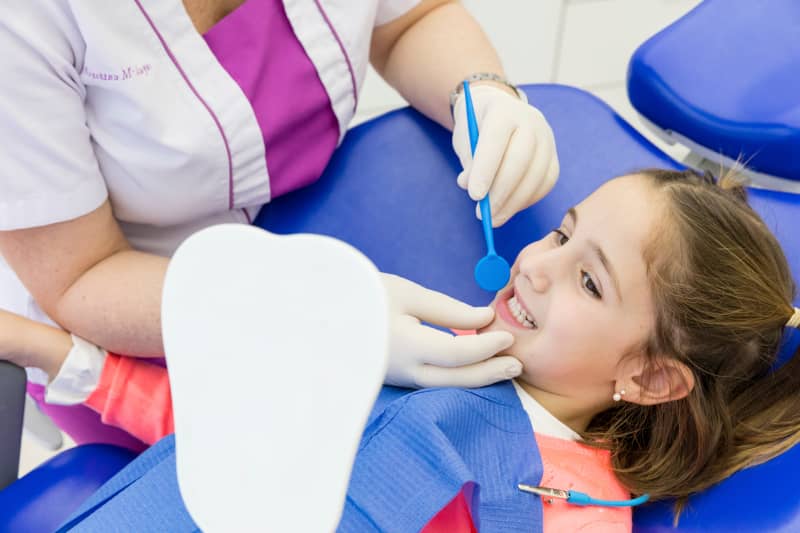Interceptive orthodontics from the age of 6
Treatments to ensure healthy teeth and gums in babies, children and adolescents.
A guide to the correct formation of primary teeth
Do you want to solve your orthodontic problem?
Ask us for an appointment with free check-up and diagnosis
Whether you want to start treatment or request information, you are in the right place. Leave us your details and we will contact you within three hours.

What is interceptive orthodontics?
Interceptive orthodontics is a treatment that allows dental malocclusion problems to be tackled at an early age when the jaws are still developing. Until the age of 12 or 13, children are in the growth phase and it is possible to guide the bones into the correct position and achieve the optimum shape and size of the teeth.
After this age, orthodontic treatment can only focus on moving teeth. That is why it is so important to have an annual check-up with the orthodontist between the ages of 6 and 11, an age range in which it is possible to take advantage of children’s development with the aim of eliminating future problems of malocclusion and dental alignment.
This type of infant orthodontics is a comfortable, short treatment (between 5 and 8 months approximately) as well as being highly effective when it comes to solving the problem presented by the young patient. On the other hand, as we say, the malocclusion can only be solved through corrective orthodontics or even surgery in more serious cases.
How does corrective interceptive help your child?
As we have mentioned, the aim of interceptive orthodontics is to take advantage of maxillary and dental development in the mixed dentition phase, i.e. when the bones of the mouth are still mouldable, to correct bite and dental position problems. This allows:
- Balance the position as well as the size of the bony structures, i.e. the maxillary and mandibular bones that make up the dentition.
- Allow the correct alignment of the permanent teeth, improving not only aesthetics but also masticatory functionality.
- To perfect the bite in order to avoid unnecessary wear and tear and even the potential appearance of other diseases such as caries.
What is interceptive orthodontic treatment like?
Interceptive orthodontic appliances are mainly used to correct posterior crossbite, expand the dental arch or cause certain tooth displacements. Depending on the needs of each little patient, the orthodontist will recommend a different appliance:
We have palate expanders which are appliances attached to the centre of the palate that help to open the palate if the child has a compressed jaw. In this way the teeth can be aligned and positioned properly, avoiding malocclusion problems in the future:
- McNamara brace which consists of a splint made of acrylic material that covers the teeth.
- Hass two-band metal bracket anchored to the sixes when the molars are semi-erupted.
- Hyrax two-band metal bracket anchored to the permanent molars and with an extension to the canines.
We have braces that help us to correct an upper arch that is further forward than the lower arch. With them it is possible to correct serious problems that would affect the functionality of the bite and the aesthetics of the person, restoring harmony to the teeth and face and enabling correct chewing:
- Bionator: a functional appliance that stimulates mandibular growth, i.e. only bone, blocking the teeth.
- Extraoral anchorage: an orthopaedic facial arch attached to the neck which slows down the growth of the upper jaw.
- Herbst: orthopaedic appliance in almost completed growth phases to reduce the distance between the maxilla and mandible.
We use braces to solve occlusion problems where the position of the lower arch is more anterior than the lower arch. Although this is one of the most complex malocclusions, interceptive orthodontic appliances for this case allow us to correct the bone position and restore functionality and aesthetics:
- Facial mask: to stimulate the growth of the upper jaw bone and encourage its forward development, in combination with a palatal disjunctor to correct the crossbite.
Specialists in Orthodontics in Mallorca
Dra. Cristina Martínez-Almoyna Rifá
Certified specialist in Invisalign and straight arch.
Bachelor's degree in Dentistry, Master's degree in Orthodontics and postgraduate degree in Paediatric Dentistry. Certified specialist in Invisalign and straight arch.
Dra. Ana Ledesma
Paediatric Medicine and Dentistry
Bachelor's degree in Dentistry and Master's degree in Paediatric Dentistry and Dentofacial Orthopaedics. Specialist in dental implants and facial aesthetics.





